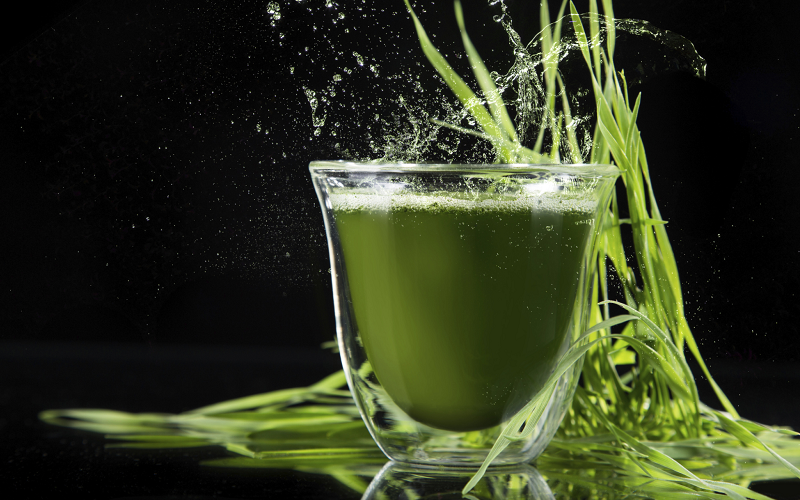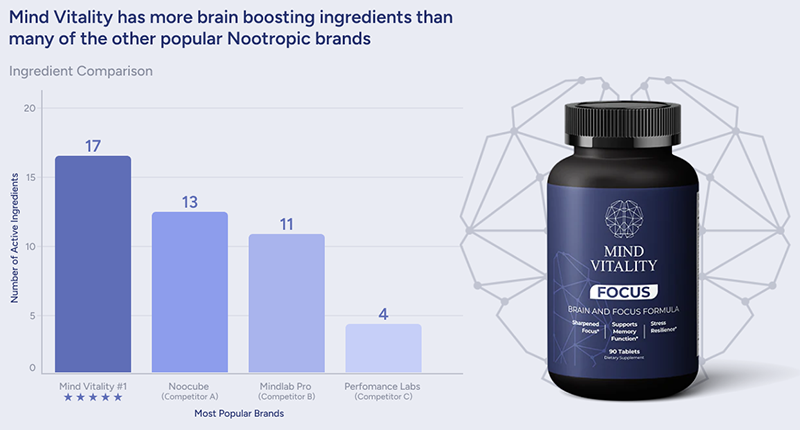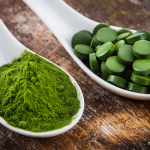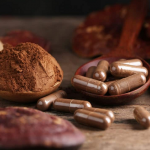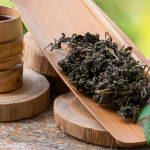Barley is best known as a grain for making bread and beer. But there’s more to barley than just its grain — it’s also a nutrient-packed vegetable. Before a barley plant has matured to the point of being a grain, it’s a green plant — a grass, actually. And this barley grass is so loaded with healthful nutrients that it’s known as a superfood, or supergreen.
Contents
What Is Barley Grass?
Barley grass, with a scientific name of Hordeum vulgare and sometimes called barley leaves or barley greens, is the form of the barley plant before it matures to the point where it starts making seeds. At this early stage in its growth cycle the plant is packed with nutrients that enable it to grower larger leaves and eventually larger seeds. People take advantage of this nutrient-rich stage and harvest and consume the green plants before they start to seed.
Barley grass is one of the earliest grown and harvested grasses in the world — it’s history goes back several thousands of years to the ancient Romans and Greeks who were known

Many of the ancients recognized the power of barley grass — they used it medicinally of liver and blood health issues, as well as just a healthy food. Oddly enough, in much more modern times people have mostly ignored the dietary benefits of grasses such a barley, wheat, rye, and oats, and instead focuses only on these plants when they were in the grain-producing stages. Only relatively recently have people again become aware that cereal grasses such as barley grass are nutritionally complete foods.
Young cereal grasses like barley grass and wheatgrass contain nutrients similar to those found in leafy, green, vegetables such as spinach — but in a much more concentrated form.
Barley Grass Health Benefits
Barley grass is rich in vitamins B1, B2, B6, and B12, vitamins A, C, E, and K, as well as other substances such as copper, calcium, potassium, magnesium, phosphorus, and zinc. Barley grass is also contains all nine essential amino acids, antioxidants, and important enzymes. It’s high in fiber, has no cholesterol, and is gluten-free. All that should make it no surprise that barley grass provides a host of health benefits.
Supports the Immune System
Your immune system is exists to fight off bacteria, infections, and all manner of invaders — think of it as an antivirus for your body. The immune system detects antigens — toxins and other foreign substances — and responds by producing antibodies. Among the wealth of nutrients in barley grass are substances that support good immune system health.
Get your vitamin C to avoid catching a cold, we’re all told. You might think oranges are the ultimate natural source of this vitamin, but the surprise is that barley grass contains seven times the vitamin C as oranges.
Another important immunity-boosting micronutrient is copper, and barley is loaded with it. Copper is essential for hemoglobin production in red blood cells and is key for good bone health. Copper, along with the selenium and zinc in barley grass, also helps to eliminate toxic heavy metals that accumulate in the body.
Contributes to Slowing Aging
Flavonoids are compounds in plants. Flavonoids provide health benefits through their antioxidant effects. The principal flavonoid in barley grass is saponarin — a flavonoid found only in barley grass, and a flavonoid that is a super potent antioxidant.
Saponarin has numerous health benefits, including reduction in low-density lipoprotein (LDL) cholesterol, regulation of glucose, prevention of bacterial infections, and anti-carcinogenic properties.
Like all antioxidants, saponarin counters the damaging effects of free radicals — the “bad” molecules that are present in alcohol, environmental toxins, processed foods, and also produced by your body in the course of converting food to energy. Free radicals damage cells and DNA, and are a large contributor to the negative effects of aging. Saponarin is the ultimate free radical fighter, and is the primary reason barley grass is thought to be a good supplement for anti-aging purposes.

Barley grass is one of the most abundant sources of another very powerful antioxidant — the enzyme superoxide dismutase, or SOD. Antioxidants in general neutralize the free radicals (unstable oxygen molecules) that contribute to aging, and the antioxidant SOD in particular is a very powerful free radical eliminator. SOD does its work by breaking down free radicals into either ordinary molecular oxygen (O2) or hydrogen peroxide (H2O2).
How important is SOD to slowing aging? Researchers have concluded that the lifespans of mammals — including humans — are directly proportional to the levels of SOD in their bodies.
Components in barley grass, such as selenium and vitamin E, can significantly improve the health of your skin. Vitamin B, iron, and other constituents of barley grass support the creation of red and white blood cells. The rejuvenation of aging cells helps to maintain youthful, healthy skin, and reduces the signs of aging.
Helps Prevent Some Cancers
The superoxide dismutase (SOD) enzyme (mentioned above) in barley grass can fight the cells of some cancers, and is used by some as a cancer preventative measure. Barley grass extract has been shown to cause apoptosis (self-destruction) of cancer cells in some instances.
Chlorophyll is the pigment in plants that give them their green color. Chlorophyll is a key part of photosynthesis — the absorption of light to produce carbohydrates from carbon dioxide and water. As is true of many supergreens, such as the algae chlorella, barley grass is rich in chlorophyll. Chlorophyll contributes to the grass being a cancer-fighter — chlorophyll binds with certain cancer-causing agents to minimize the carcinogenic effect of those agents.
Barley grass has also been shown to slow the growth of breast cancer and prostate cells by inhibiting tumor growth, though the exact mechanism for why this occurs has not been established.
Protection Against UV Radiation
Ultraviolet (UV) radiation is a type of radiation emitted by the sun as well as artificial sources such as tanning beds. UV radiation does provide some benefits for humans — such as the creation of vitamin D — but too much of it carries with it health risks. And the majority of people (in the United States, at least) are exposed to too much UV radiation in their lifetimes.
The SOD enzyme (mentioned in the Contributes to Slowing Aging section) in barley grass has cell-building properties that protects cells from the destructive effects of UV radiation as well as restores cells already damaged by radiation.
Barley grass can also lessen the effects of radioactivity. The chlorophyll (discussed in the Helps Prevent Some Cancers section) in the grass strengthens resistance to radioactivity, as well as increases the production of new blood cells. Because of this, some nutritionists recommend taking a barley grass supplement both before and after being subject to medical x-rays.
Prevents Osteoporosis
Osteoporosis is a bone disease that occurs when a body makes too little bone, loses too much bone, or both. The result is bones that are weakened and more susceptible to breakage. There is no cure for osteoporosis, but there are ways to prevent osteoporosis from occurring, and alleviate some of its symptoms if you already have the disease. One of those ways to do this is by supplementing your diet with barley grass.
The high copper and phosphorus content in barley grass powder contributes to overall bone health. Calcium is a key component in ensuring good bone health, and barley grass has plenty of this mineral — over 10 times the calcium content of milk. Together manganese and the B vitamins contribute to normal bone production, and barley grass has high levels of both of these nutrients.
How and When to Take Barley Grass
Barley grass supplements are available as tablets or capsules, or in powder form. If you have tablets or capsules, simply pop the recommended number of pills. If you have powder, you mix the powder in water, a juice of your choice, or add some powder to your favorite smoothie or protein drink.
There is no established, proper dosage of barley grass — people take anywhere from a half gram (500 mg) to 6 or more grams per day. Barley grass doesn’t cause drowsiness or excitability, so the time of day at which you take the supplement isn’t important.
Some people recommend taking barley grass on an empty stomach (either 20 minutes before a meal or 2 hours after a meal), believing that the nutrients will be more easily assimilated. If there is any truth to this theory, the difference in assimilation is probably very slight. Most people who take barley grass in powder form mix it in a juice, or even a smoothie that includes fruits and/or other vegetables. And some people are just fine taking barley grass with a meal — in fact some people will sprinkle some powder in with the main ingredients of a recipe.
If the idea of taking barley grass along with several other supergreens appeals to you, consider a superfood powder supplement like AllMax Nutrition CytoGreens — it includes barley grass along with over two dozen other superfoods.
Barley Grass Side Effects and Safety
Good news for anyone interested in supplementing their diet with barley grass — there are no known side effects attributed to this plant. That actually shouldn’t come as a big surprise. After all, barley grass is simply a vegetable, and very few vegetables come with any adverse side effects.
Barley Grass Is Gluten-Free
Gluten is a protein found in many grains, including rye, wheat, and, yes, barley. Gluten provides no essential nutrients, and it can negatively affect the health of some people — people with celiac disease and people that are gluten-sensitive.
If you fall into one of those two categories, then no doubt you’re cautious and concerned about the foods you eat. Here’s the good news for you. While barley grain includes gluten, barley grass does not. Barley grass is immature barley — it’s truly a grass, and there is no grain developed at this stage. So, if you’re concerned about gluten, when it comes to barley grass, don’t worry — it’s gluten-free and you can consume as much as you want, whether in tablet, capsule, powder, or juice form.
Barley Grass and Pregnancy
Most supergreens — and this includes barley grass — are completely safe to take during pregnancy and breastfeeding.
Not only is barley grass safe, it has essential nutrients that are required during pregnancy. The iron, magnesium, potassium, and calcium in barley grass are all important for the development of a fetus. The folic acid (folate) in this plant helps to protect a fetus from several serious birth defects.
Barley grass is a rich source of beta-glucan — a type of fiber that can raise the levels of prolactin in lactating mothers. Prolactin, referred to as the breastfeeding hormone, increases both the quantity and quality of a woman’s breast milk.
Conclusion
Barley grass is the green leaf of the immature barley plant before the plant reaches the stage where it produces grain. Barley grass contains one of the most — if not the most complete, balanced nutrient profile of all green plants.
Barley grass contains an abundance of antioxidants, chlorophyll, minerals, proteins, vitamins, amino acids, and enzymes, making it an exceptional superfood, or supergreen.


